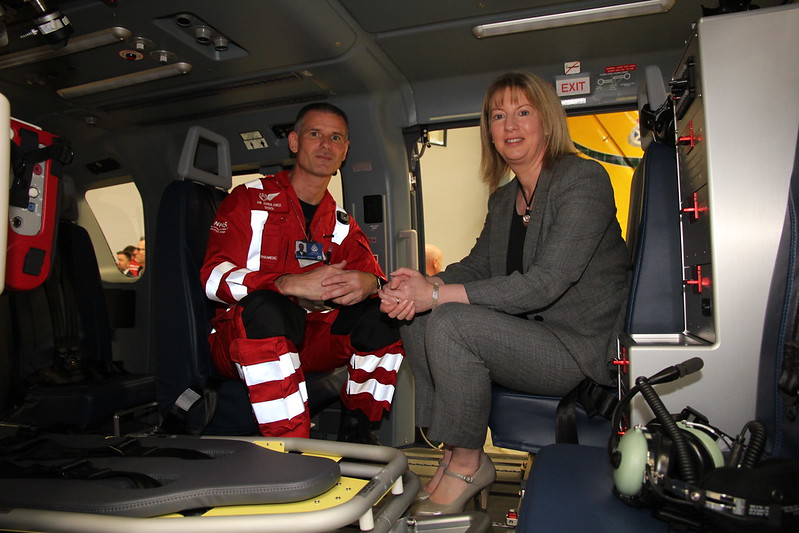EMS Training: Skills, Certification, and Career Paths
Emergency Medical Services (EMS) training prepares people to respond to urgent health incidents, stabilize patients, and support transport to definitive care. Training ranges from basic first aid and CPR to advanced life support and clinical decision-making. Programs combine classroom instruction, hands-on skills labs, simulation, and supervised field experience to build competence for work in ambulances, emergency departments, and community healthcare settings.

What does paramedic training cover?
Paramedic programs teach advanced clinical skills, pharmacology, cardiac care, airway management, trauma assessment, and patient stabilization. Coursework typically includes anatomy and physiology, pathophysiology, ECG interpretation, and intravenous access. Training emphasizes clinical judgment under pressure and documentation standards required by medical oversight. Most paramedic courses include clinical rotations in hospitals and ride-alongs with ambulance crews so trainees gain exposure to real emergency calls and learn to work within multidisciplinary teams.
How does ambulance operations training work?
Ambulance operations training combines vehicle safety, scene management, and patient-handling techniques. Trainees learn how to assess scene risks, manage equipment, secure patients for transport, and communicate with receiving facilities. Instruction includes navigation of legal and regulatory responsibilities, infection control, and use of stretcher systems and medical devices commonly carried on ambulances. Practical skills are reinforced through scenario-based drills that simulate time-critical transfers and coordination with dispatch, fire, or law enforcement.
How does EMS prepare for an emergency?
EMS education emphasizes rapid assessment, prioritization, and treatment protocols for a wide range of emergencies. Students practice triage, airway control, hemorrhage control, immobilization, and cardiac resuscitation. Training also covers uncommon but high-risk events, such as mass-casualty incidents, hazardous materials exposure, and pediatric emergencies. Emphasis on teamwork, communication with callers and bystanders, and continuous reassessment helps crews adapt quickly when conditions change during an emergency response.
How does EMS fit into healthcare systems?
EMS operates as an integrated component of the broader healthcare system, bridging the scene of injury or illness and definitive medical care. Training addresses coordination with emergency departments, primary care, public health, and specialty services. Paramedics and EMTs must understand referral pathways, documentation that supports continuity of care, and when to activate additional healthcare resources. EMS training increasingly covers community paramedicine roles and preventive interventions that connect patients with local services rather than defaulting to ED transports.
What medical skills are taught in EMS training?
Core medical skills include airway management, oxygen therapy, cardiac monitoring, intravenous and intraosseous access, medication administration, wound care, and basic obstetric interventions. Students practice patient assessment frameworks to detect subtle signs of deterioration and apply evidence-based protocols. Clinical decision-making and ethical considerations are taught alongside procedural competence. Simulated scenarios and supervised clinical time ensure learners can translate technical skills into safe patient care in unpredictable field settings.
Providers that offer EMS training include national organizations, certification bodies, and local educational institutions. The following table lists established providers and typical services they provide; program availability and course content can vary by region and institution.
| Provider Name | Services Offered | Key Features/Benefits |
|---|---|---|
| American Red Cross | First aid, CPR, basic emergency care courses | Widely available community courses; focuses on foundational response and certification |
| American Heart Association (AHA) | BLS, ACLS, PALS, resuscitation training | Standardized curricula for cardiac and pediatric life support; recognized by many employers |
| National Registry of Emergency Medical Technicians (NREMT) | National certification and examinations | Provides entry-level and intermediate certification standards and testing |
| National Association of Emergency Medical Technicians (NAEMT) | Continuing education, specialty courses (e.g., tactical, community paramedicine) | Offers advanced and specialized EMS education resources for professionals |
| Community colleges / local EMS training centers | EMT and paramedic certificate/degree programs | Often include classroom, lab, and ride-along clinical components tailored to local protocols |
This article is for informational purposes only and should not be considered medical advice. Please consult a qualified healthcare professional for personalized guidance and treatment.
In conclusion, EMS training equips practitioners with a blend of clinical knowledge, technical skills, and operational judgment required to manage emergencies and support patient transitions into the healthcare system. Whether pursuing entry-level EMT certification or advanced paramedic credentials, effective programs combine didactic instruction, hands-on practice, and supervised field experience to build readiness for work in ambulances, emergency settings, and community healthcare roles.






